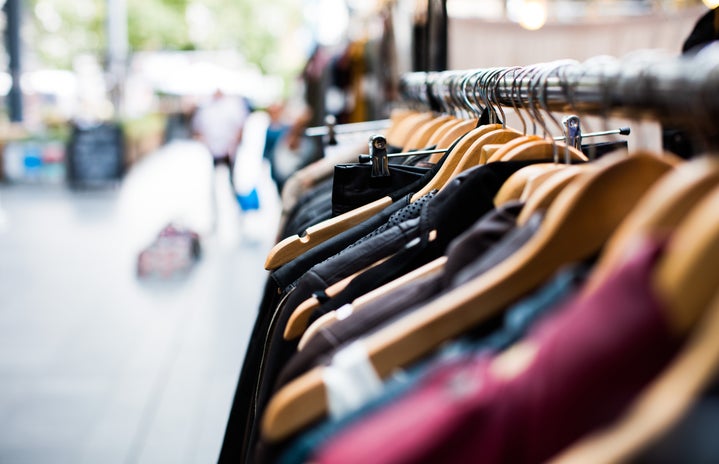In a world of ever-changing trends, it is no wonder why fast fashion has taken over the fashion industry. It’s quick, inexpensive and attainable — which is perfect for those in college and on low budgets.However, the simplicity of fast fashion is too good to be true. The fashion industry is one of the highest polluters in the world — and when you think about it, it makes sense. With clothing manufacturing comes chemicals, dyes, fabric and tags. Not to mention plastic wrap and boxes when the clothing is transported to stores and packaging when clothing is bought online and delivered right to your front door.
With all the advocacy for becoming more ecologically friendly and to reduce your carbon footprint, many shoppers have made it a priority to have a more sustainable, eco-friendly wardrobe.
According to Make it Last, sustainable fashion can be defined as “clothing, shoes and accessories that are manufactured, marketed and used in the most sustainable manner possible, taking into account both environmental and socio-economic aspects.”
The problem is, sustainable fashion is not as affordable as fast fashion. With good ingredients comes a higher cost, and unfortunately, a price that most people are not able (or want) to pay.
But it’s important to understand that sustainable fashion is not just what is in the clothing. It’s the whole process — from production to packaging to consumption. A brand who is considered sustainable is responsible for making the whole life of an item sustainable, which even includes those who make the product.
A lot of times, fast fashion brands will take advantage of struggling communities by building their mills in areas of need. This allows them to get away with unethical treatment of employees including no breaks and unsafe working conditions. On the other hand, sustainable fashion brands will pay their employees well, honor their rights and ensure their safety. These factors all come into play when clothing is priced.
The ingredients in sustainable fashion also play a major role in pricing the items. Sustainable fashion brands use natural ingredients that have to be farmed. These farmers are expected to limit their use of pesticides and even monitor their water waste. Natural ingredients not only take a lot longer to make, but they cost a lot more than synthetic materials.
Because the ingredients fast fashion brands use are cheaper to produce, faster to make and made of chemicals, it allows these brands to produce a lot of items in a short period of time — which is not the best for the environment and certainly are not made for long-lasting quality.
While it is not in everyone’s budget to join in on the sustainable fashion movement, what everyone can do is become more aware of their shopping habits. The less we buy, the less of a carbon footprint we leave. It is smart to invest in products that will last us — and at the end of the day, it’ll cost us less to do so, which is always a bonus. Less is more.
—
Edited by Katie Carnefix



